More Pets and People Together Grants
The More Pets and People Together grant application period is now over. If you currently keep cats in single-compartment housing, you can apply for a Portal grant to convert that housing into double-compartment housing. If you’re a municipal shelter or a private shelter with municipal contract who has not yet joined California for All Animals, you are eligible for a Welcome grant. Other grant opportunities will be available in 2024.
The UC Davis Koret Shelter Medicine Program (KSMP) is announcing requests for proposals for the California for All Animals (C4AA) Program. We are excited to partner with you to make an impact on animal shelters and communities in California.
When times are tough for people and pets in our communities, shelter teams rally every resource and partnership to keep—and bring—people and pets together. Still, animals are entering shelters and staying there longer; fewer animals are returning to their homes or finding new ones. Families and their pets are facing complex economic, housing, and public health challenges that stem from systems built to be inaccessible to most of us, and when we go to work, we see the impact firsthand.
In this moment we can reject norms that divide us and build bridges in place of barriers. When an outdated practice, unfair policy, or oversized fee doesn’t support pets and people together, we can change it. Side by side, we can create communities where all of us, no matter what we look like, where we live, or what’s in our wallets, can thrive with our pets or build new bonds through fostering, volunteering or adopting.
Below are the guidelines and steps to apply for a More Pets and People Together grant.
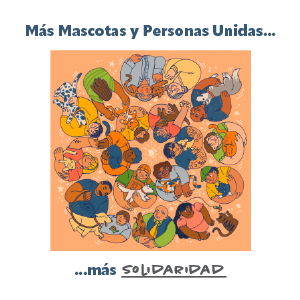
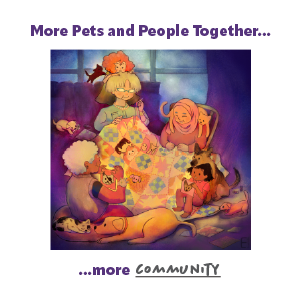
The More Pets and People Together Grants application period will be open to eligible organizations for 15 days beginning on Friday, September 15, 2023 at 7:00am PDT and ending on Friday, September 29, 2023 at 7:00pm PDT.
Applications will be reviewed by the UC Davis KSMP team and the C4AA Advisory Council. Final grant awards will be decided during the month of November and decision notifications will be sent by December.
Grant Overview
The funding priority for this grant cycle is to enable animal shelters to take the necessary steps to dismantle barriers and create processes that can lead to the following measurable outcomes:
- Preventing intake and keeping pets in their homes
- Decreasing length of stay of animals in the shelter
- Reducing euthanasia of healthy and treatable animals
- Increasing live outcomes through foster, adoption and return to home/community
Barriers often rooted in bias, fear, saviorism and colonialism have been deeply engrained in the systems that shape our lives, and animal welfare is no exception. It can be hard to detect and dismantle these barriers, which lead to often unintentional yet harmful consequences, including:
- Increase in the amount of time animals spend in the shelter or in foster care
- Increase in euthanasia of healthy and treatable animals
- Operating beyond budgetary, staffing and housing capacity
- Decrease in adoptions or return to home/community outcomes
- Decrease in available foster homes or volunteers
- Decrease in intake diversion opportunities
- Lack of trust between shelter and community
This grant cycle will focus on removing barriers in four focus areas:
- Adoptions
- Foster programming
- Return to home/community/field
- Intake prevention services
We welcome innovation outside these focus areas in an outcomes process not listed above.
Incremental Change is Change
We recognize that sustainable change takes place over extended periods of time, and we encourage organizations to use this funding opportunity to commit to any of the following incremental changes aimed at dismantling barriers and building bridges within the community. Each organization’s unique circumstances (whether it be budget, staff capacity, or general community resources) will dictate their approach.
- Streamlining adoption process by removing irrelevant or intrusive steps (e.g., conducting home checks or requiring landlord checks)
- Shortening the adoption form to focus on essential contact information and adopter preferences/questions
- Conducting an analysis to reduce or remove adoption fees
- Expanding or deepening adoption outreach in untapped communities
- Promoting adoptions in multiple languages; accurately translating materials to languages spoken in the communities you serve
- Promoting alternatives to adoption commitment – trial adoption, weekend getaways, day-long outings
- Removing application and onboarding steps aimed at denying people from helping (e.g., background checks, home checks or landlord approvals)
- Offering alternatives to an in-person orientation (e.g., reading materials or on-demand videos)
- Conducting collaborative outreach in zip codes that are not currently engaged in fostering
- Accurately translating materials to other languages spoken in the communities you serve
- Providing supplies, veterinary services and other forms of resources to fosters
- Implementing finder-foster and foster-to-adopt programs
- Eliminating and/or waiving fees and citations whenever possible, making going home the priority
- Providing forms of identification, such as collars with ID tags and microchips
- Providing harm-reduction options (e.g., fencing repair, runners, dog crates)
- Subsidizing cost of required modifications for all (e.g., installing or fixing a fence)
- Offering to schedule a spay/neuter appointment for intact animals
- Listing all found animals and forms of reunification support and resources on your website, social media and community engagement materials (e.g., door hangers or flyers)
- Accurately translating materials to languages spoken in the communities you serve
- Offering transportation of pets if community member can’t travel to the shelter
- Conducting proactive, collaborative outreach in zip code(s) with the highest intake
- Offering low-cost or free prevention services such as spay/neuter, microchips, ID tags and collars, vaccinations, food, behavioral support, transportation, etc.
- Removing income questions (i.e., means testing) from service request forms
- Forming partnerships with community members, animal care organizations and human services agencies focused on supporting the most marginalized groups of people in your community (e.g., services for unhoused community members, human food banks)
- Explicitly listing all forms of support offered on all your platforms/engagement materials in a manner that invites people to ask for support when needed
- Accurately translating materials to other languages spoken in the communities you serve
- You know your community and your organization’s circumstances well, and we welcome you to consider creative approaches not listed above
- Some examples include undertaking organization-wide DEI training, translating all public-facing materials or partnering with human services or community-centric grassroots organizations
Eligible Organizations
Animal shelters in the following categories are eligible to apply for a More Pets and People Together Grants:
- Municipal shelters
- Private shelters with municipal contracts
- Private shelters without municipal contracts
The eligible organizations listed above must house animals in a brick-and-mortar facility and be open to the public for a minimum of fifteen hours per week for adoptions and/or return to home.
Also eligible: Animal control agencies that provide field services and animal control functions are also eligible to apply, even if they do not perform sheltering services.
If your organization does not meet these criteria, consider partnering with your local animal shelter or animal control agency or join the More People and Pets Together movement.
Funding Amounts and Grant Terms
Most grants will be funded in a range of $25,000 to $200,000; however, if your proposal is outside this range, reach out to our team and we can talk through it.
Organizations may apply for either a one-year or two-year grant term.
Application Evaluations
In an effort to promote equity, C4AA will prioritize organizations in high and moderate-to-high vulnerability communities. Organizations in low or moderate-to-low vulnerability communities are encouraged to partner with organizations with fewer resources or thoughtfully focus projects within excluded or marginalized communities.
C4AA will prioritize projects that are focused on any of the following priorities and guiding principles:
- Promoting racial equity, diversity and/or inclusion for the community and/or staff members
- Removing barriers for community members to access resources and services
- Partnering with community members and/or other community-centric organizations to understand needs and identify solutions
- Partnering with animal welfare non-profit/foster-based organizations
- Partnering with human service/community-based organizations to increase outcomes and remove barriers
- Shifting to a positive, resource-based perception of the shelter and/or animal control’s role
- Building trust between people working in the shelter and members of the community
Application Steps
Note: if this is your first application for a grant from California for All Animals, please fill out our Welcome Questionnaire first. Read more about our $5000 Welcome grants here.
Step 1
We strongly encourage you to review the More Pets and People Together Applicant Checklist in the From Barriers to Bridges Action Kit before you begin filling out the grant application.
Step 2
View and download the sample application and gather the necessary information
Step 3
Review the optional resources below or download a PDF version of the list.
Step 4
Submit your application between Friday, September 15, 2023 at 7:00am PDT and Friday, September 29, 2023 at 7:00pm PDT.
Reach out to our team if you have questions along the way or if you need to submit your application in a different format (e.g., video recording)
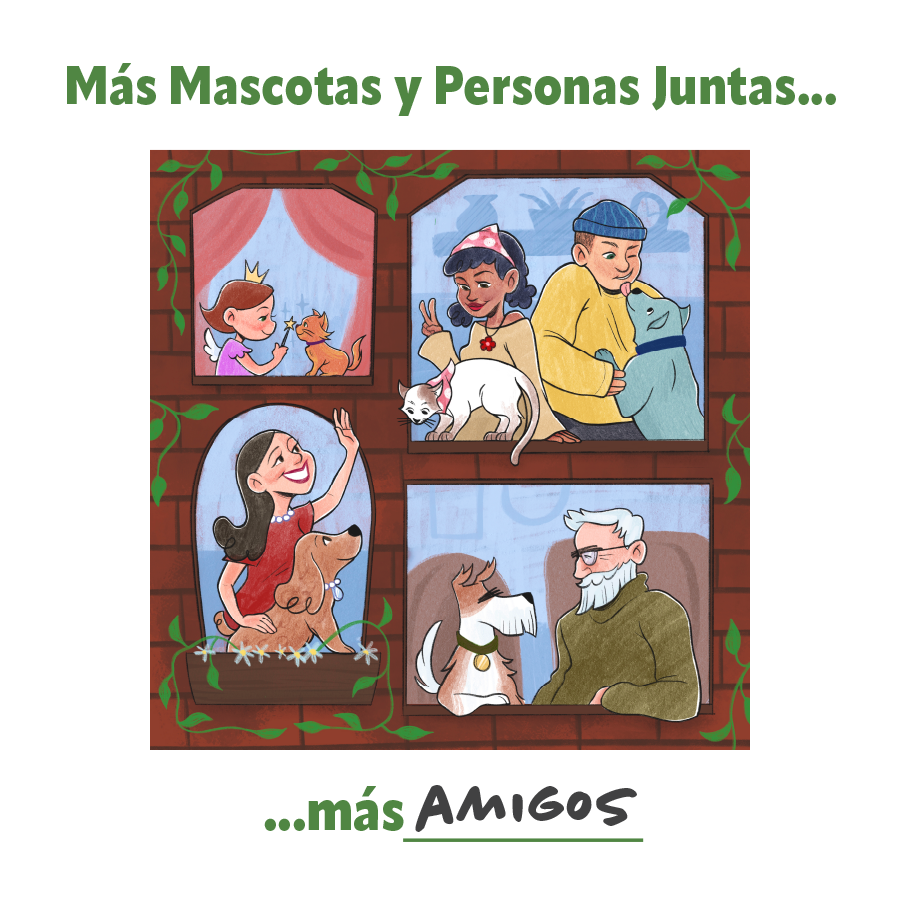
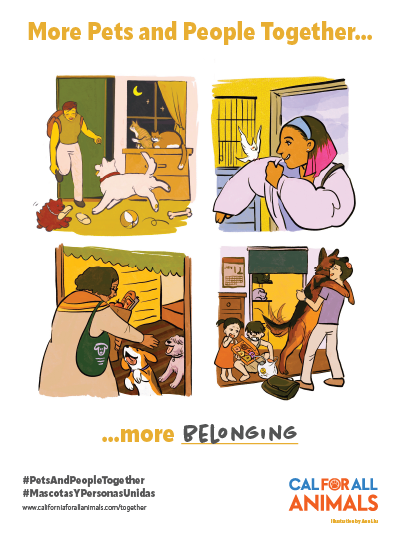
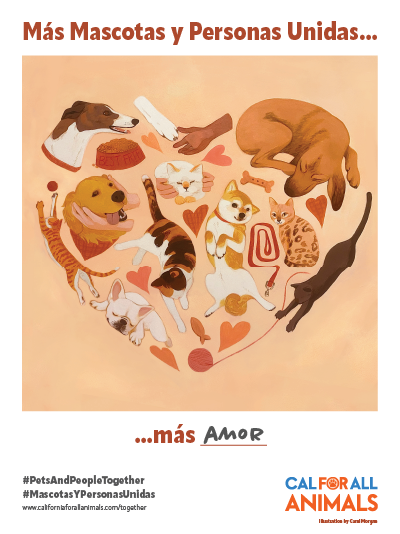
Roundtable Discussions
Inspiration on-demand from your colleagues. In this series of four dynamic roundtable conversations, frontline workers leading change across California and the country highlight collaborative approaches to removing barriers that come between people and pets and dish on creative solutions they’re implementing now to ensure pets spend more nights at home, not in the shelter. Grab a seat at the table!
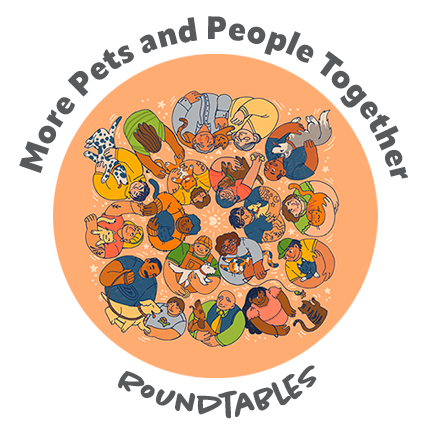
Barrier-Busting Resources
Looking for evidence that making incremental changes can improve conditions and outcomes at your shelter? Seeking new ideas or help getting unstuck from old ways that no longer serve you?
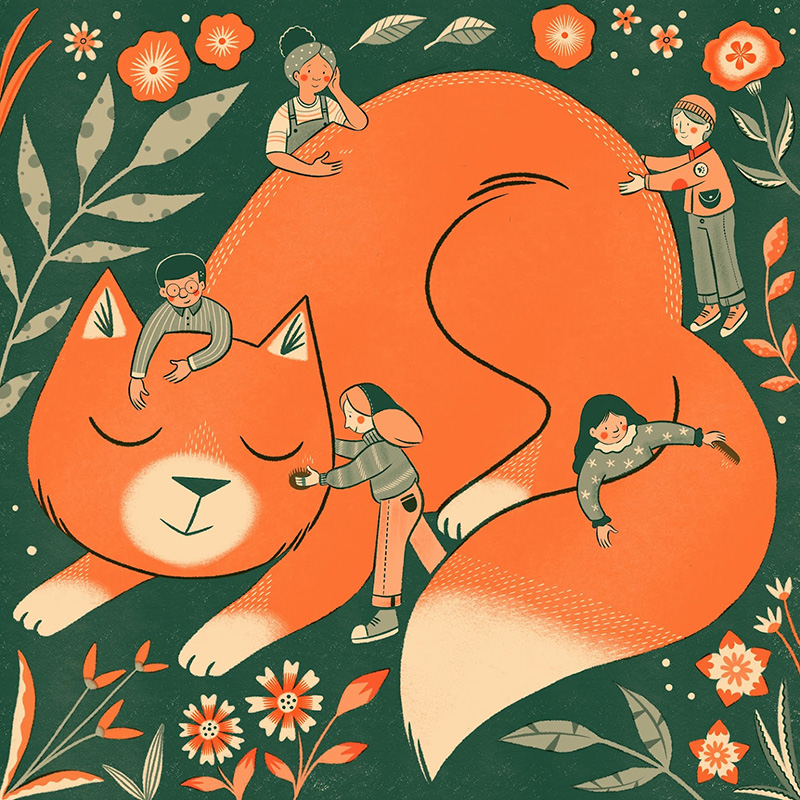
Top Recommended Resources
We’re recommending a top pick for each of the categories of this grant cycle, along with an additional one or two great resources. A downloadable guidebook to barrier-busting will be added to this page after the first Roundtable discussion.
Adoptions
- Recommendation #1: The Power of Yes: Three things to do today to open the kennel doors and send animals home by Allison Cardona (Maddie’s University)
- Recommendation #2: Companions and Animals for Reform and Equity [CARE]: WHAT CAN YOU DO TO HELP STOP PET ADOPTION DISCRIMINATION?
- Recommendation #3: SEAACA Adoption Form
Foster
- Recommendation #1: Breaking Down Barriers in Foster Programming by Nadia Oseguera (California for All Animals All Call)
- Recommendation #2: Finder Foster Legal Considerations with Shelter PALS (Maddie’s Million Pet Challenge Learniverse)
- Recommendation #3: 5 important insights from our National Foster Survey (Maddie’s Fund)
Return to Home
- Recommendation #1: Increase Summer Adoptions & Return to Home by the UC Davis Koret Shelter Medicine Program Team (CalAnimals; free registration required—start at 01:03:46)
- Recommendation #2: Return to Home Panel (Maddie’s Fund—start at 16:45)
- Recommendation #3: KC Pet Project Return to Home Huddle presentation by Atlas Gatten (Maddie’s Fund)
Intake Prevention
- Recommendation #1: Listening to Hear: Removing Hidden Barriers & Offering Grace by Jennifer Toussaint (Maddie’s Fund Community Conversations)
- Recommendation #2: What’s Housing Policy Got to Do With It? by Dianne Prado (Maddie’s Fund Community Conversations)
- Recommendation #3: Case Management Approach to Intake by Luis Quintanilla, Humane Society of Harlingen, Texas (Maddie’s Fund Community Conversations—start at 13:50)
Barrier-Busting Adjacent Topics
- Recommendation #1: The Future of Animal Welfare: Positive Disruption Will Save More Lives by Sheila Kouhkan (Maddie’s Fund Community Conversations)
- Recommendation #2: Practical Solutions to Diversify Your Organization Through Data and Strategy by Jasmin Bell, Kourtney Hudson and Bobby Mann (California for All Animals All Call)
- Recommendation #3: Resources for Examining Systemic Inequities, curated list by Dr. Jyothi Robertson (JVR Shelter Strategies)
Explore more resources to dive deeper:
- Lisa LaFontaine on Learning While Leading: Humane Rescue Alliance President and CEO shares mistakes she has made and lessons she has learned leading a diverse organization working with diverse communities (California for All Animals All Call)
- Help the People and the Dogs: Allyship and Anti-Racist Animal Advocacy: Animal and scholar Kassidi Jones’ presentation on the interconnected history and legacy of racism and dog guardianship in the U.S. (Every Dog Austin)
- Freeing Ourselves from Colonial, White Savior Models of Philanthropy (Nonprofit Quarterly)
- No More Building Resiliency: Confronting American Psychology’s White Supremacist Past to Reimagine Its Antiracist Future (Review of General Psychology)
- Short Term Foster Programs for Shelter Cats: Beneficial or Problematic? by Dr. Kristyn Vitale (Maddie’s Fund)
- Animal Shelter Applications and Questionnaires Re-imagined and Low-Barrier Quick-Start Guide (Kristen Hassen, Outcomes Consulting)
- Montgomery County Animal Services and Adoption Center
- My Dog Adoption Application Got Rejected (That Mutt)
- People, Pets, and Purpose: Kassidi Jones Adopted a Dog and Became an Anti-Racism Influencer (Human Animal Support Services)
- Tiktok video regarding adoption barriers (@braveboymilo)
- Recognizing and Understanding Bias for the Animal Welfare Professional Workshop (CalAnimals)
- Developing a Return to Owner Mindset (University of Florida Shelter Medicine Program)
- Northern Tier Shelter Initiative Zoomies: How Agency Culture & Community Engagement Helps Reunite Lost Pets (ASPCA Pro)
- Lost Dog Intake Management Process (Kristen Hassen, Outcomes Consulting)
- Helping Pets Get Home (Cabot Animal Support Services)
- Found a lost pet? (Lifeline Animal Project)
- If You’ve Found a Lost Cat (Stray Cat Alliance)
- Return to Field you say? Tell that to my community/commissioners! (Million Cat Challenge/Maddie’s Fund)
- Found a Pet? Instagram Post (Human Animal Support Services)
- Coordinated Care Fast Track “Progressive Intake Prevention”: Kelly Bremken and Jennifer Toussaint discuss alternatives to means testing and other approaches to keeping pets in their homes. (Maddie’s Million Pet Challenge Learniverse; free registration required)
- Community Cat Programs – Legal Considerations (Maddie’s Million Pet Challenge Learniverse)
- How your animal organization can better connect with the community it supports (Maddie’s Fund)
- Downtown Dog Rescue Shelter Intervention Program (SIP)
- Race and ethnicity are not primary determinants in utilizing veterinary services in underserved communities in the United States (Journal of Applied Animal Welfare Science)
- Compassionate Communication: Supporting People and Pets Through Human-Centered Language (Human Animal Support Services)
- Community Partnerships Communications Kit (HeARTs Speak x Human Animal Support Services)
- Data Commons – Google initiative synthesizing publicly available data—from demographics and economics to education and housing—from open sources, including census.gov, cdc.gov, data.gov, etc.
- Multi-Dog Households (ASPCA Pro)
- Sample Shelter Website (UC Davis Koret Shelter Medicine Program)
- Veterinary Access to Care Report, 2018 (Access to Veterinary Care Coalition – AVCC)

